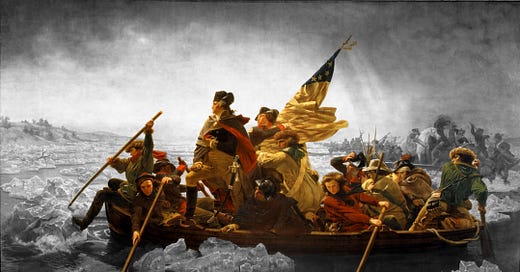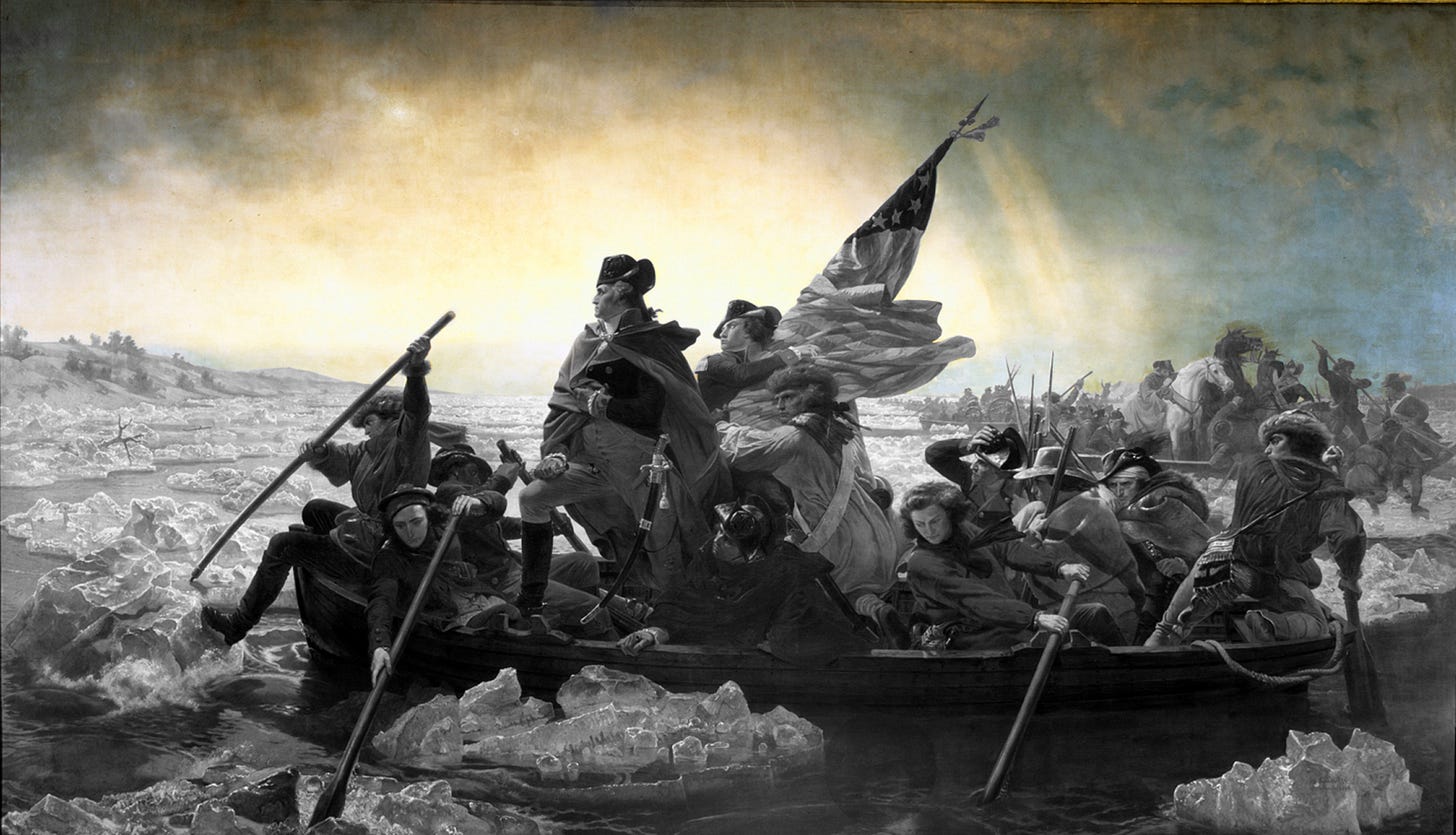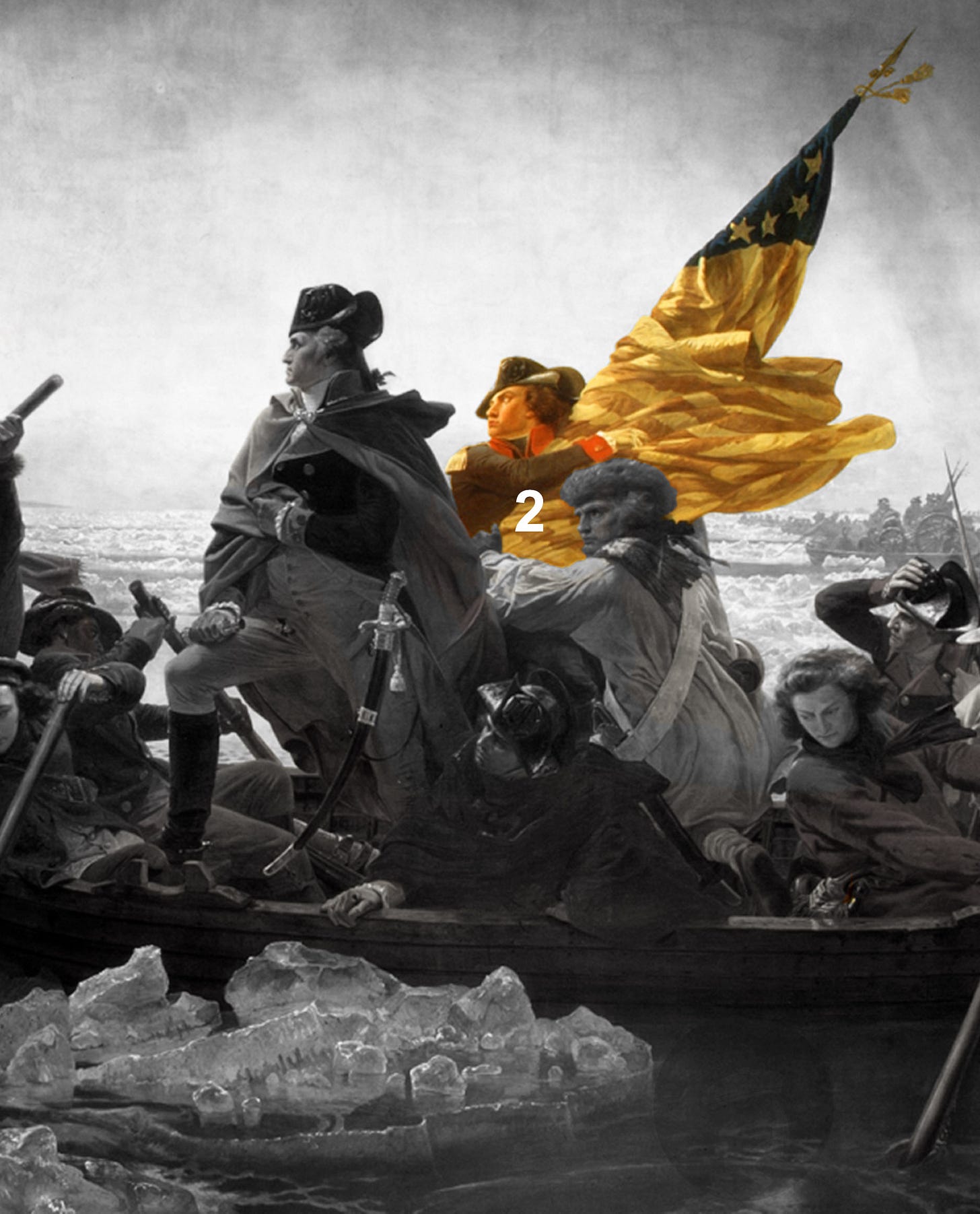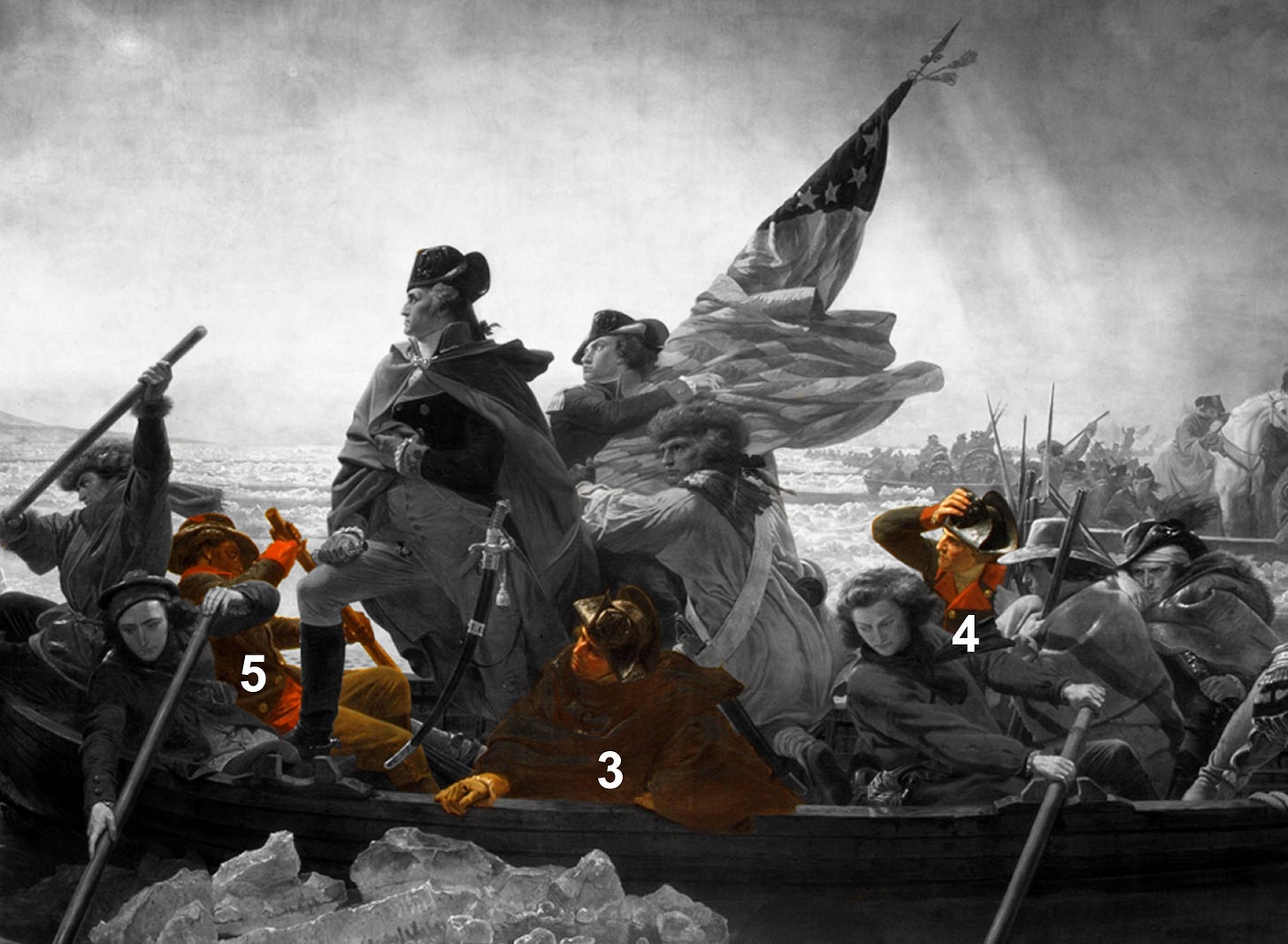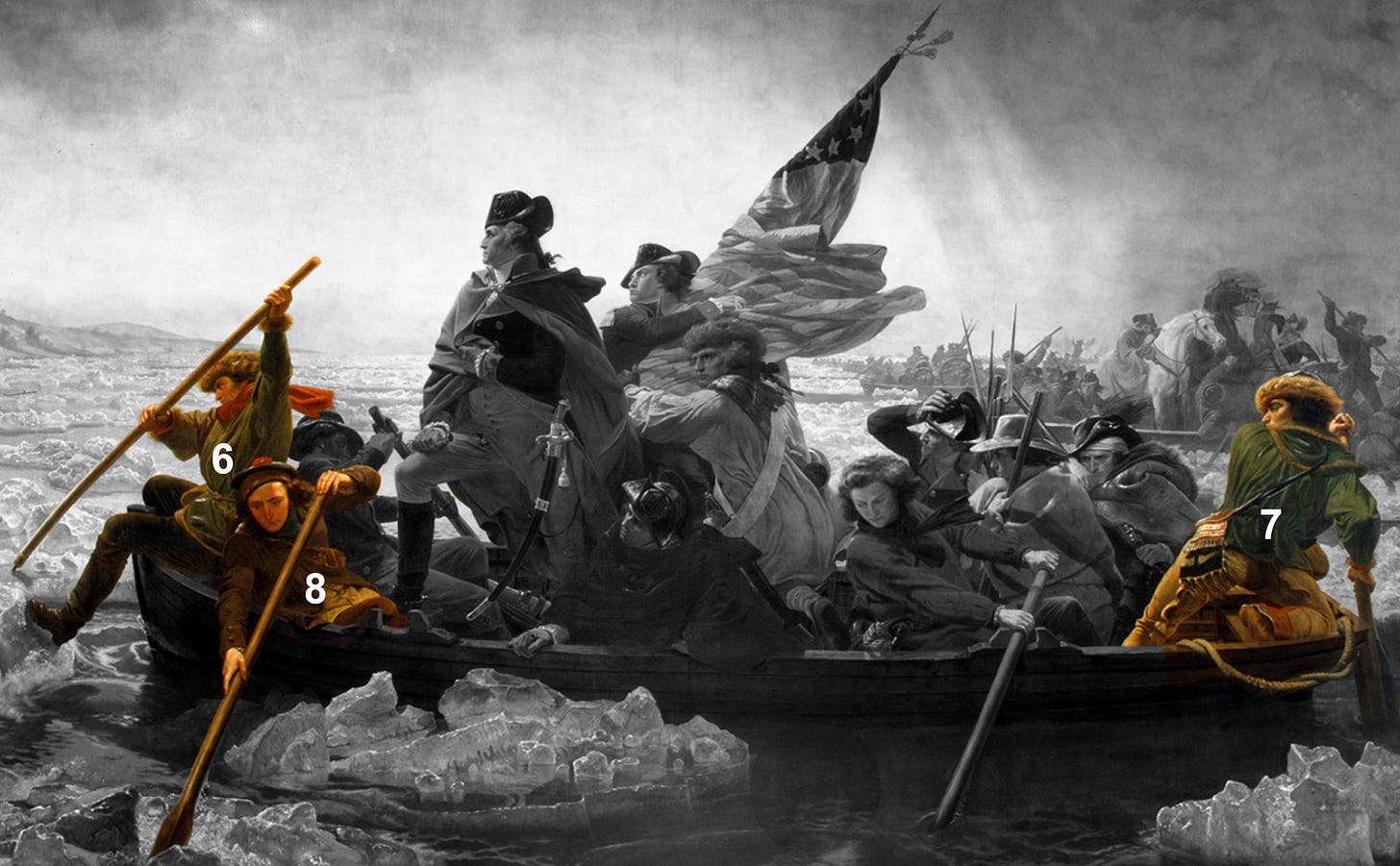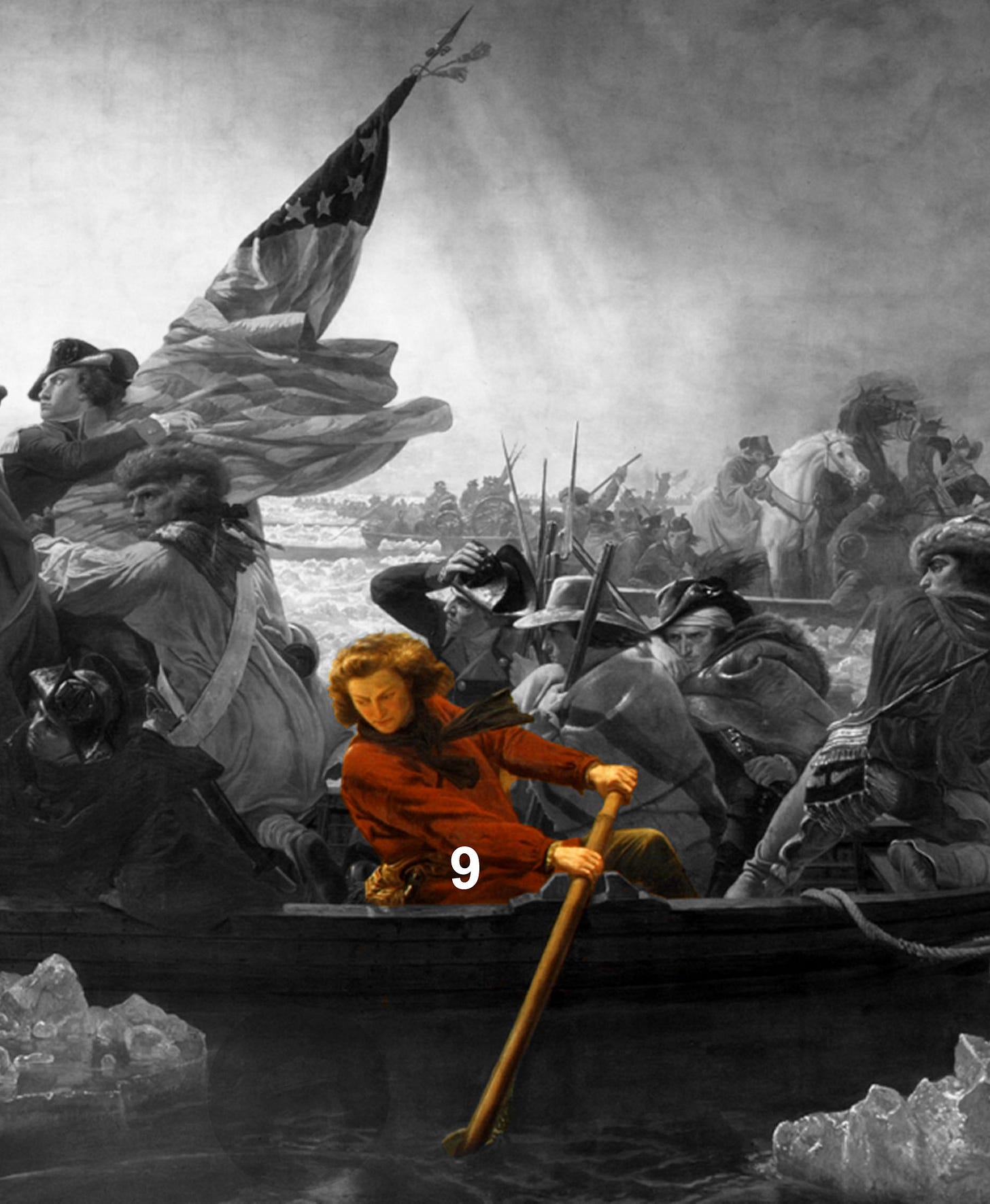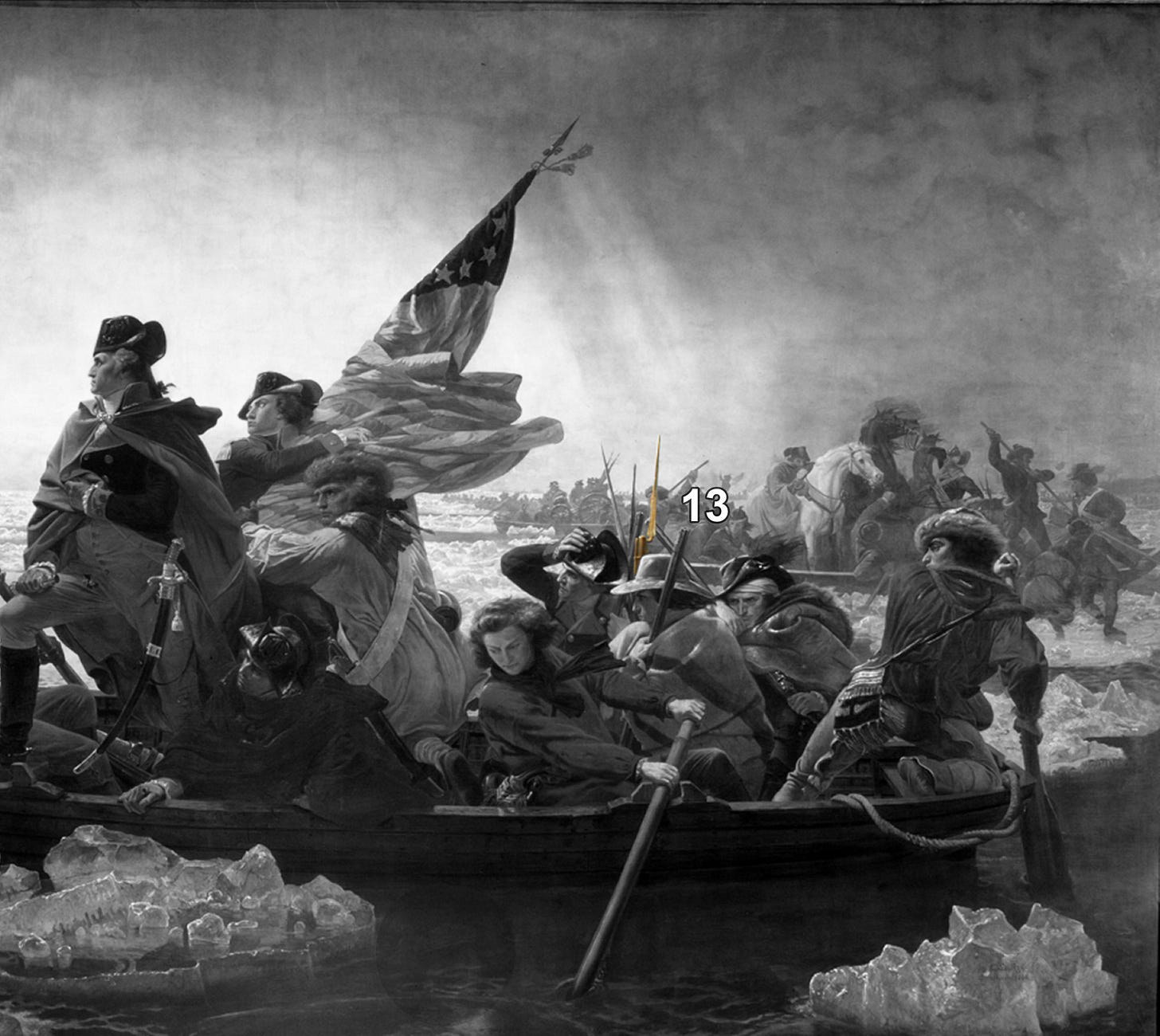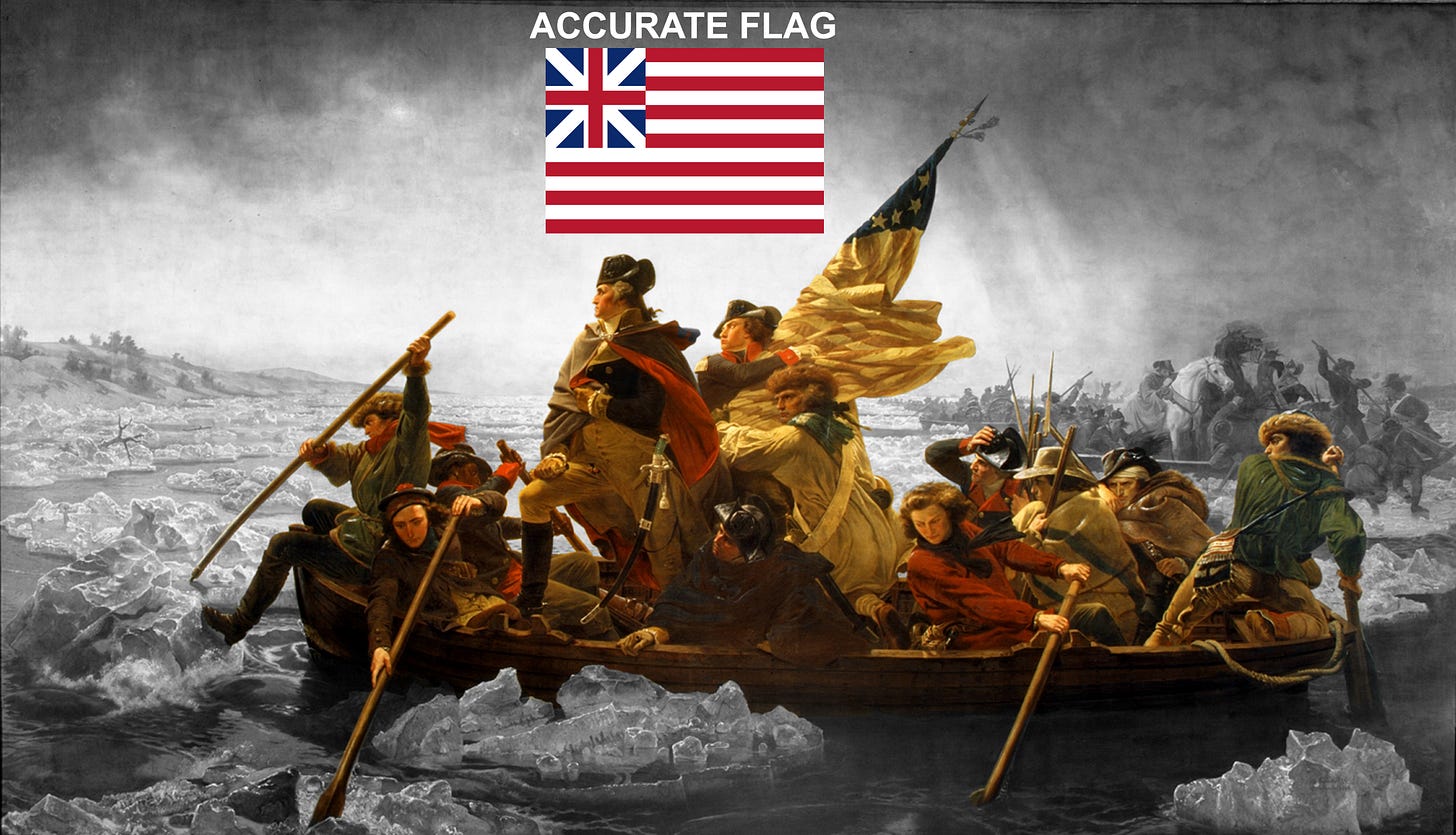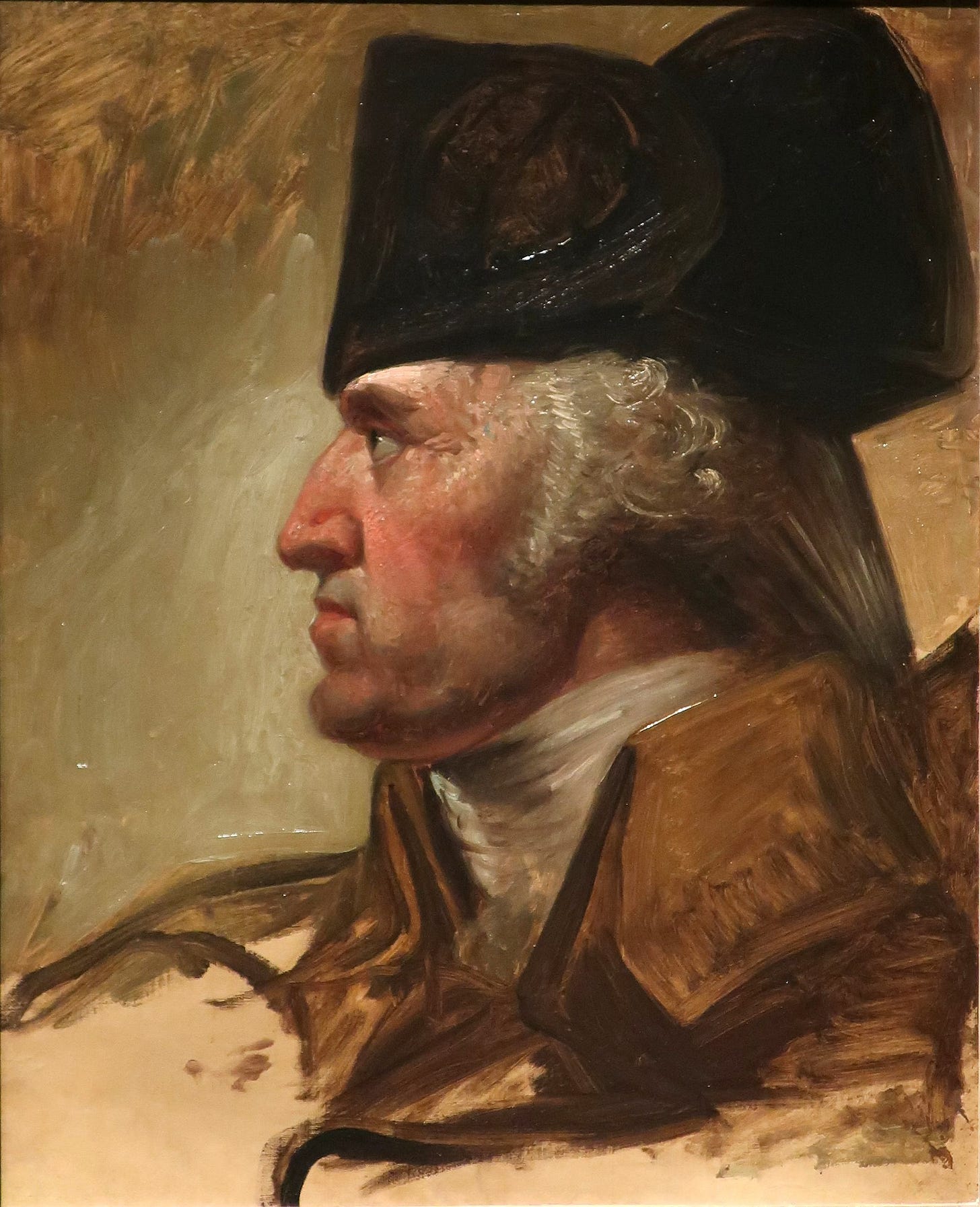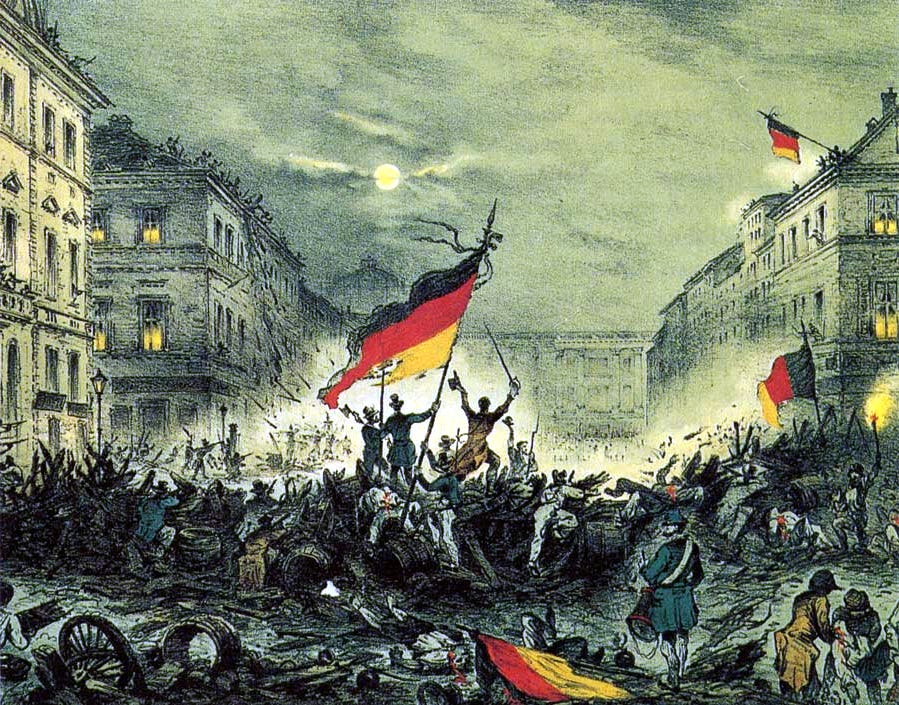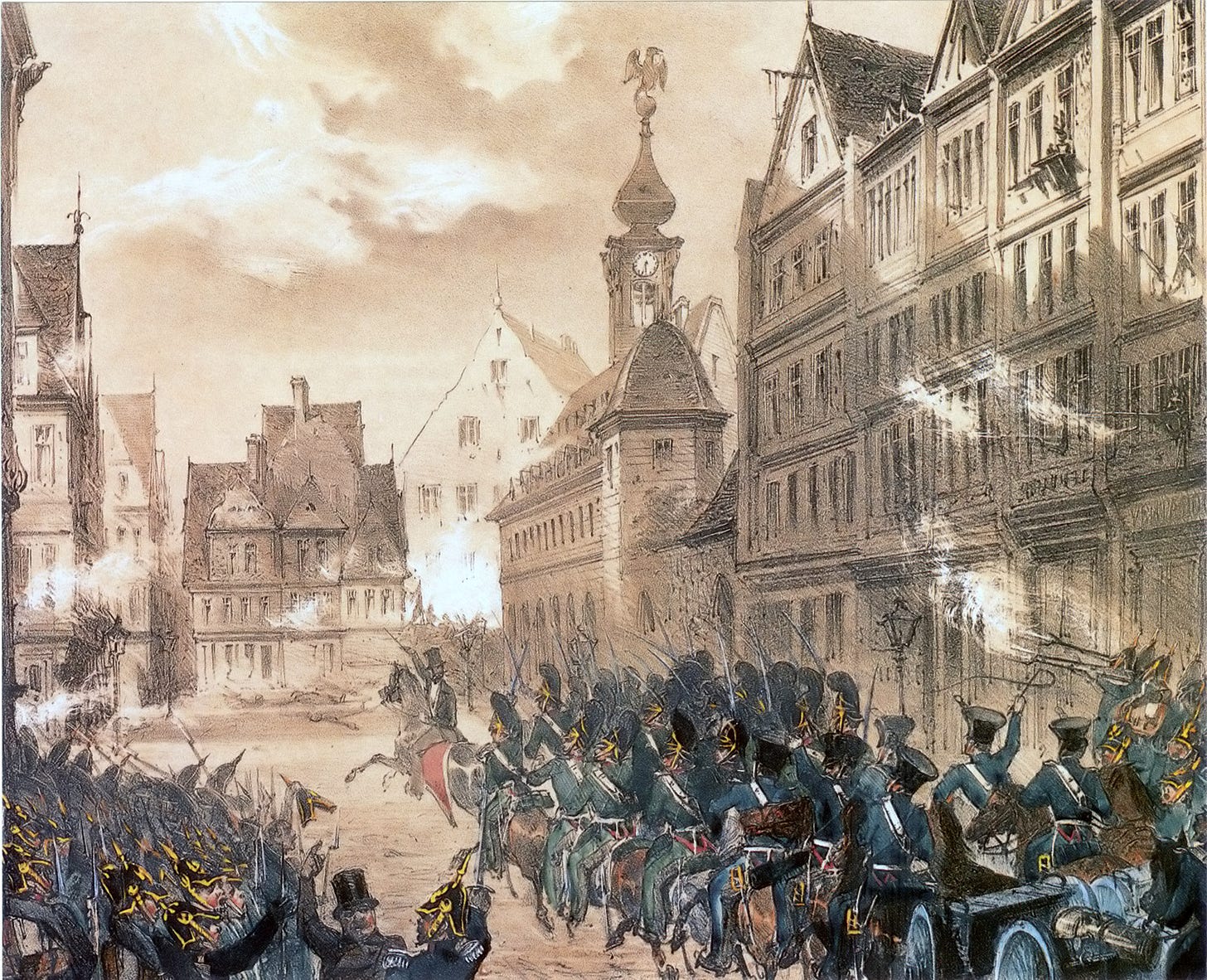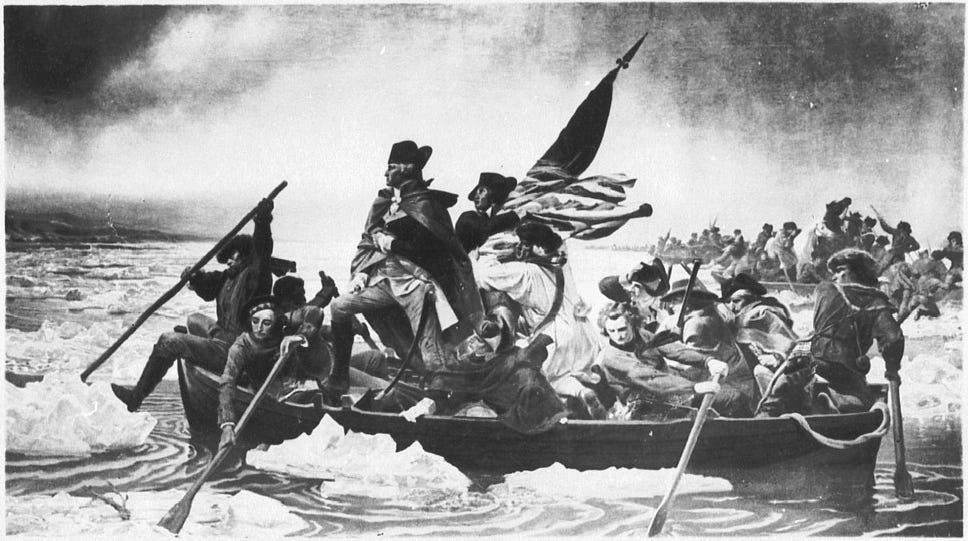Though it was painted by a German and contains numerous inaccuracies, this painting ranks in the utmost echelon of American national iconography.
Let's see who is who and unveil its secrets on the eve of the 247th anniversary of the events.
General George Washington and his men are crossing of the Delaware River on the night of 25-26 December 1776 in a surprise attack against the Hessian units of the British in the Battle of Trenton, New Jersey.
A great victory for the Continental Army.
The painting is known for its romantic, theatrical composition: the figure dominating the scene, George Washington (1), depicted in a heroic ruler's pose with a billowing cloak.
He holds a telescope and wears a saber , symbolic of a statesman’s vision and a soldier’s strength.
He stands out against the unnatural, almost divine, light of dawn, which practically creates an aura around it, as in religious paintings.
It is unclear whether there are any other historical figures besides George Washington.
According to the 1853 exhibition catalogue, the man standing next to Washington and holding the flag is Lieutenant James Monroe (2), future president of the United States.
The man leaning over the side is General Nathanael Greene (3), and General Edward Hand (4) is shown seated and holding his hat within the vessel.
The African-American man on the bow might be Washington’s black aide, Prince Whipple (5).
The rest of the crew is a cross-section of the American colonies. At the bow and the stern of the boat are western riflemen in hunting shirts and deerskin leggings (6, 7).
Another is a recent immigrant from Scotland (8), still wearing a Balmoral bonnet.
A third is an androgynous figure in a loose red shirt (9), maybe a woman in man’s clothing, pulling at an oar.
Huddled in the back of the boat are farmers from Pennsylvania and New Jersey, in blanket coats and broad-brimmed hats (10, 11, 12). One carries a countryman’s double-barrelled shotgun (11) and the other has his head swathed in a bandage (12).
Hidden behind them is a mysterious thirteenth man. Only his weapon is visible and we can’t but wonder who he might have been.
The artist adapted a classical format, i.e. a fresco-like arrangement that culminates in a pyramidal grouping with the flag at the top.
Oars, icebergs and figures form the diagonals, creating a "dynamic surface tension".
The colors consist of mostly dark tones, expected at dawn, and there are red highlights repeated throughout the painting.
A foreshortening perspective and the distant boats both lend depth to the painting and emphasize the boat carrying Washington and his men.
Of course, the painting takes a significant creative license: the crossing took place at night, the travel distance is exaggerated, the early version of the Stars and Stripes flew for the first time on September 3, 1777, almost a year after these events…
Furthermore, Washington’s stance would have been very hard to maintain in the choppy conditions of the crossing and could have risked capsizing the boat.
Washington's boats were substantially larger than the small boat in the painting, between 40 and 60 feet long, etc.
The painting may fail to represent the historical facts accurately, but perfectly portraits the high drama of those times when people believed the revolution was near collapse.
In fact, it testifies to the power of art: this depiction managed to turn a minor but pivotal episode of the American Revolutionary War into a mythical event that has entered the collective imagination of the American people.
The author of the painting is Emanuel Leutze, a painter born and trained in Germany, although he spent part of his childhood and the last years of his life in the United States.
The idea for the painting came to him at a time when the 1848 Revolutions broke out in Europe, inspired by democratic principles.
He hoped that his painting would inspire European revolutionaries through the example of the American Revolution.
When the revolutionary wave failed in Europe, the painting instead came to represent the determination and struggle to overcome oppression, a heroic quest like the one depicted in the canvas.
Leutze painted 3 versions of this iconic work but only 2 survive today.
The first version was finished in 1850 and was purchased by the Bremen Art Gallery in Germany.
Unfortunately, it was destroyed during a British air raid in 1942.
The Museum’s staff had evacuated the rest of the collection but Leutze’s painting was too massive (12 x 21 ft) to fit through the doors and burned down inside the building.
The surviving second version from 1851 has been a major work in the collection of the Metropolitan Museum of Art in New York since 1897.
A third (smaller) version, executed under Leutze's supervision in 1851 by Eastman Johnson, was displayed at the White House and later at the Minnesota Marine Art Museum.
In May 2022, this painting was auctioned by Christie's and sold for $45 million.
Sources/further reading
http://www.nww2m.com/2012/09/bremen-bombed-art-destroyed/
https://www.americanrevolutioninstitute.org/washington-crossing-the-delaware-primary-source-analysis/
https://www.metmuseum.org/art/collection/search/11417
https://jamanetwork.com/journals/jamapsychiatry/fullarticle/1107391#:~:text=Another%20man%20is%20dressed%20in,only%20his%20weapon%20is%20seen.&text=The%20German%2DAmerican%20artist%20Emanuel%20Leutze%20completed%20the%20painting%20in%20Germany.


